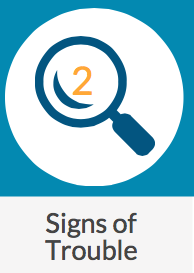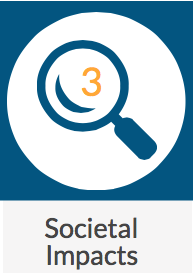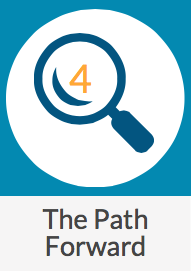If you missed the first two posts on Venezuela, you can click on their titles to read the first post, “Venezuela: Then and Now” and the second post entitled, “Venezuela: Signs of Trouble”. Each post will link you to the next in the series.
This is the third in a series of posts taking an in-depth look at Venezuela’s past and present social, political, and economic troubles, the role socialist leaders and their policies played, and how this relates to current conversations within our own government. Understanding the history of such an evolution is an important way to keep similar problems from reaching other shores, including our own.
Click on the icons below to read the posts for this series.
In this third post of the series, we highlight the impacts felt by a society that was supposed to be enjoying all the benefits of nationalization and government-run social programs. Instead, the Venezuelan people are fleeing the country. Those who stay are suffering from poverty, inflation, violence, scarcity of goods, crises in health care and education, and crumbling infrastructure. The statistics are astounding, and life on the ground in what was once Latin America’s richest nation is now beyond comprehension.
Inflation
As noted in previous posts, the extent of Venezuela’s reserves has essentially made oil the country’s only export. Oil revenues have allowed Venezuela to import goods from abroad, but a drop in oil prices in 2014 stopped this pattern. Without high oil prices, oil revenues declined and Venezuela could no longer import those goods it did not produce itself. The scarcity of goods drove prices up, resulting in massive inflation that hit 800 percent in 2016 . The price controls under President Chavez made necessities more affordable, but that meant it was no longer profitable for businesses to make them; as a result, people were forced to turn to the government for handouts or to the black market (BBC).
President Maduro has repeatedly increased the minimum wage in an attempt to combat inflation since 2013. In August of 2018, a 3000% increase in the minimum wage equated to 1800 bolivares, about $20 a month. Inflation has already topped 1 million percent, and the International Monetary Fund (IMF) predicts consumer prices will rise 10 million percent in 2019. This is because no foreign investors are willing to risk a capital investment given the economic instability, and so inflation will continue to rise as the government prints more money to “cover a widening budget shortfall” (Bloomberg).
So what does this hyperinflation look like? By the end of 2018, prices were doubling every 19 days on average (BBC). Partially because the money has become so worthless, almost 90 percent of Venezuela’s population lives in poverty. For Marilyn Alma, a mother of three who had to give up custody of her eldest child because she could not feed him, a dozen eggs is the equivalent of three days of wages. A pound of butter costs about one-third of the monthly minimum wage. President Maduro responded by introducing a new currency, which was the old currency with five zeros eliminated. The effort has only succeeded in creating two worthless currencies circulating around Venezuela (NY Times). Business Insider further illustrates the crisis.
Education
As the economy crumbles, education has become a luxury for few Venezuelans who remain in the country. Josefina Chavez, a substitute teacher, notes that enrollment in her classes has dropped from well over 30 students to anywhere between 10 and 20, depending on the day. Most students do not attend regularly, and a lapse in public transportation has also made it difficult for children to get to school (Washington Post).
Many students go to school primarily to receive the state-sponsored meals, but in some schools, such as the Miguel Acevedo Educational Unit about 50 miles outside of Caracas, the power is out and there is only running water 3 days a week. Many schools delayed the start of classes in September of 2018 due to “lack of power, inadequate sanitation, and insufficient food” (Reuters). Kory Hernandez, another substitute teacher, notes that many professionals have fled the country, leaving schools that could otherwise open without teaching staff to do so (Washington Post).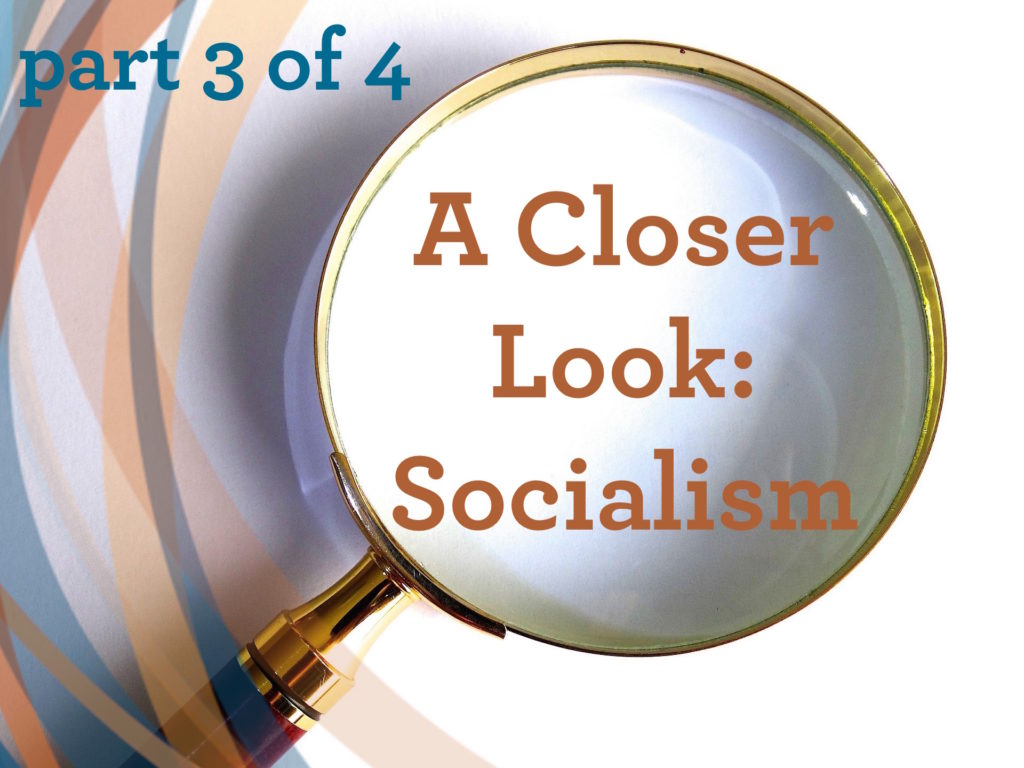
Post-secondary education is also suffering. Simon Bolivar University, dubbed Venezuela’s “University of the Future,” was government-funded since it opened in 1970. It is now financed by private donations from alumni living abroad, yet these funds are not enough to save the university’s crumbling infrastructure. Professors can only expect to earn the equivalent of $25 per month, and so many classes are taught via Skype by graduates as professors flee the country to pursue other work opportunities (Bloomberg). Over 430 faculty and staff members left the university between 2015 and 2017 (CNN).
Healthcare
Education is not the only sector experiencing brain drain; over 13,000 doctors have fled Venezuela’s inhospitable conditions since 2014, looking for better opportunities abroad (NPR). Besides the crisis situation in which they cannot afford to live, medical professionals have also been attacked by patients’ frustrated relatives; according to doctors advocacy group, Doctors for Health, “violent acts in Venezuela’s decaying medical system have become increasingly common,” and include robberies and shootings (Reuters).
Medical professionals are also suffering abuses from the government. Doctors have been interrogated and hospital directors have been suspended for publishing research papers or making public statements about the severity of the Venezuela’s situation and the government’s role in the deterioration of the health system. The 1996 Constitution guaranteed the right to health as “an obligation of the State” and created a national public health system that was integrated with the Social Security system. The State, however, has not complied with the Constitution and has instead reduced funding, silenced practitioners, and censored health system publications. The government now spends about 1.5 percent of GDP on healthcare, which is 75 percent lower than the world standard (CEPAZ).
In 2015, Venezuela’s Health Ministry “stopped publishing weekly updates on relevant health indicators.” When health minister Antonieta Caporale briefly resumed updates in 2017 and published mortality statistics, she was quickly fired. Besides revealing that maternal mortality rose 65 percent and infant mortality rose 30 percent from 2016 to 2017, the publication revealed that the tuberculosis incidence rate is at its highest since the 1970s; that there were 2000 diptheria cases and 7300 measles cases reported during 2017; and that 9 Venezuelan states were suffering a Malaria epidemic that the World Health Organization (WHO) has now recognized as an emergency situation. In 2018, the Venezuelan Center for Classification of Diseases (CEVECE), which ensured integrity and quality of health records, was also eliminated (Human Rights Watch, CEPAZ).
Most Venezuelans no longer turn to their country’s hospitals for treatment. Between 2011 and 2017, hospitals lost at least 60 percent of their medical assistance capacity due to “shortage of supplies, failure of thousands of machines, rupture of sewage pipes, resignations of health personnel, power outages and water shortages.” Additionally, import cuts have made medicines nearly impossible to find. High-cost medicines are no longer imported, leaving patients with cancer, Parkinson’s and multiple sclerosis without necessary medications. Shortages range from 55 to 88 percent across the country’s hospitals for more basic medicines such as those to control hypertension or diabetes. Other treatments, such as organ donations and transplants, stopped in 2017. For cancer patients, only 4 of 25 radiotherapy units in the country are operating (CEPAZ).
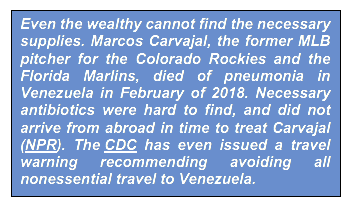
Disease is accompanied by widespread malnutrition. Yaneidi Guzman is one of the many Venezuelans unable to afford food, despite working two jobs. A university study found that, on average, almost two-thirds of Venezuelans surveyed lost about 25 pounds in 2017. According to WHO standards, malnutrition among children under the age of 5 in Venezuela has reached “crisis level” (Human Rights Watch). Venezuelans are calling this the “Maduro Diet,” as noted in this poignant letter.
Refugee Crisis
Venezuela is now the origin of one of the largest mass migrations ever on the Latin American continent. Over 3 million people, about 10 percent of Venezuela’s population, have fled the shortages of food, water, and medicine, with 2 million having left since 2016 alone. Most people leave Venezuela on foot, willing to take the 125-mile journey through the Andes Mountains between Caracas and the border with Colombia; with low salaries and hyperinflation, few can afford bus tickets (NY Times).
Neighboring countries including Ecuador and Peru initially welcomed migrants but have since tightened entry requirements, authorized police raids on undocumented residents, and deployed troops to their borders. In fact, Venezuelans now need a passport to travel to other Latin American countries, when they previously only needed national identity cards. This adds insult to injury as passports are difficult to obtain given “paper shortages and a dysfunctional bureaucracy” (Reuters).
Those fleeing Venezuela face hostility from citizens of other nations who accuse Venezuelans of stealing their jobs. Former Venezuelan doctors and engineers are working as waiters or store clerks in Colombia and Peru. Alexis Ron, for example, used to fix high-end cars in Caracas; in the Colombian border town of Cúcuta, he only earned a few dollars a day by washing cars, and his boss underpaid him. Many work to send money back to family members who remain in Venezuela because the remittances are the primary income for their families (NY Times).
Colombia in particular, Venezuela’s neighbor to the west, is bearing the brunt of Venezuela’s challenges. Everyday, the opening of Simon Bolivar International Bridge between the two countries “brings a queue of Venezuelans into Colombia, most having been standing inline all night.” At the end of the bridge is La Parada, a market where Colombians used to make money from border trade but is now where many Venezuelans go to sell their wares. Some do not even have real wares to sell; Laura has crossed the bridge to cut and sell her hair for 30,000 pesos, the equivalent of about $10. She spends 8000 of those pesos to pay for the insulin her daughter needs to manage her diabetes, insulin that Laura can only get at the border because supplies in Venezuela have run out (BBC).
You can see more about what Colombia is doing during this refugee crisis here.
The Latest Pain Points
Energy Infrastructure
Venezuela’s government kept home power bills low by relying on subsidies, but declining oil revenues and years of poor maintenance and mismanagement has left the electrical system in disrepair. Intermittent outages are a regular occurrence as a result of crumbling energy infrastructure, but a massive outage in early March revealed the severity of the situation. The outage, the worst the country has experienced, struck the capital during a Thursday evening rush hour and affected at least 15 of Venezuela’s 23 states, with some sources saying 22 states were left without power. Pro-government officials immediately blamed Venezuela’s opposition party, claiming they had sabotaged Venezuela’s hydroelectric Guri Dam as part of an “electrical war” directed by the United States. The Venezuelan Attorney General has declared that the opposition leader Juan Guaidó is “under investigation for the alleged sabotage of the country’s power grid” and paramilitary forces have arrested prominent Venezuelan journalist Luis Carlos Diaz, claiming he was also part of the plot (Associated Press, WSJ).
Energy experts, power sector contractors, and employees from Corpoelec, the government energy company, dismiss the accusations of sabotage. They instead attribute the problems to “years of underinvestment, corruption and brain drain,” and say the extent of the blackout indicates a major failure inside the Guri Dam’s turbines. The San Geronimo B substation, which provides electricity for 80 percent of the population from the Guri Dam, went down on Thursday, March 7. The government has been using the smaller, weaker San Geronimo A backup substation to send sporadic power to Caracas. Now, experts say evaluating and restarting the turbines would require the skilled operators who “had long left the company because of meager wages and an atmosphere of paranoia” (NY Times).
Power was temporarily restored on Saturday, March 9th before shutting out again in Caracas and staying out for the weekend. Power has been intermittent in the capital since, and Tuesday marked the sixth day of blackouts in Western Venezuela. The fallout has only exacerbated the suffering of the Venezuelan people. The internet-usage tracker NetBlocks estimated that 80 percent of the country did not have access to the internet for the weekend. Especially in western cities like Maracaibo, looters are ransacking businesses. The head of the local business chamber said that “11 supermarkets, eight bakeries, a milk plant, a chicken processor and other businesses had been looted” since the weekend. Unable to stop them, one butcher just stepped aside as looters destroyed his shop. Gas stations are unable to pump fuel, causing many to turn to the black market for gasoline in “a country that subsidizes fuel to the point that it is nearly free” (WSJ).
In hospitals, machines required for dialysis, incubators, and artificial ventilation have stopped functioning; some hospitals have back-up generators, but many are damaged or have already run out of fuel. Hospitals struggle even more because water pumps depend on electricity. People have turned to polluted rivers as a water source, but for hospitals the lack of water only fuels “sanitation problems that are aggravated by shortages of cleaning products.” According to Julio Castro of the organization Doctors for Health, at least 20 people have died in public hospitals due to the outage (Reuters).
On March 14, Venezuela’s information minister claimed that power had been restored, although many reported power had not been restored everywhere in Caracas and hospitals across the country were still suffering from intermittent outages. The blackout revealed the poor state of the infrastructure, falling apart due to “mismanagement, corruption, and Latin America’s deepest economic crisis on record” (WSJ). These photos from The Guardian illustrate the effect of the blackout in Caracas.
Aid
During the first week of February, aid from the United States and Colombia reached the Colombian border, with more at the border with Brazil. Maduro has repeatedly denied the extent of the crisis in Venezuela, and has depicted any aid effort as “part of a hostile foreign military intervention” (The Guardian). He ordered troops to barricade bridges at the borders to prevent any aid from entering the country, while opposition leader Juan Guaidó asked the armed forces to allow aid in (Reuters). Over 300 low-ranking soldiers, also suffering shortages in the country, fled their posts over that weekend and are seeking asylum in Colombia. However, they are a small fraction of the 200,000 troops of Venezuela’s armed forces that remained loyal to Maduro and refused to let the trucks filled with food and medicine cross the border (NBC).
Blackouts and disputes over humanitarian aid are just the latest in a series of occurrences that have escalated the tension between President Maduro’s regime and the opposition led by self-declared interim president Juan Guaidó. Stay tuned for the next installation of Hot Topics: A Closer Look at Socialism for more on the recent political developments that have garnered so much international attention, and what the path forward looks like for Venezuela and the international community.
For a visual representation of the crisis, look at this set of charts.
The Policy Circle is a 501(c)3 that provides a fact-based, nonpartisan framework built to inspire women living in the same community to connect, learn about and discuss economic policies that impact their lives. Women across the nation are taking a leadership role in the public policy dialogue on what human creativity can accomplish in an open economy.

